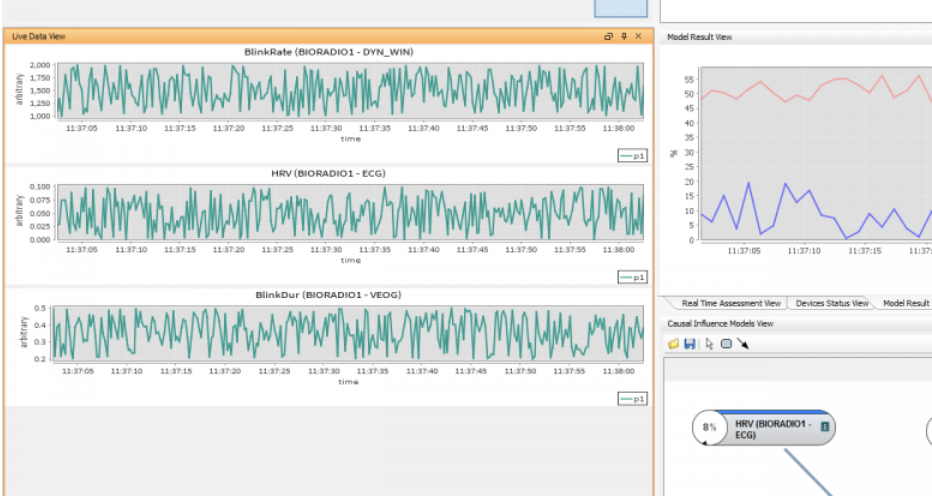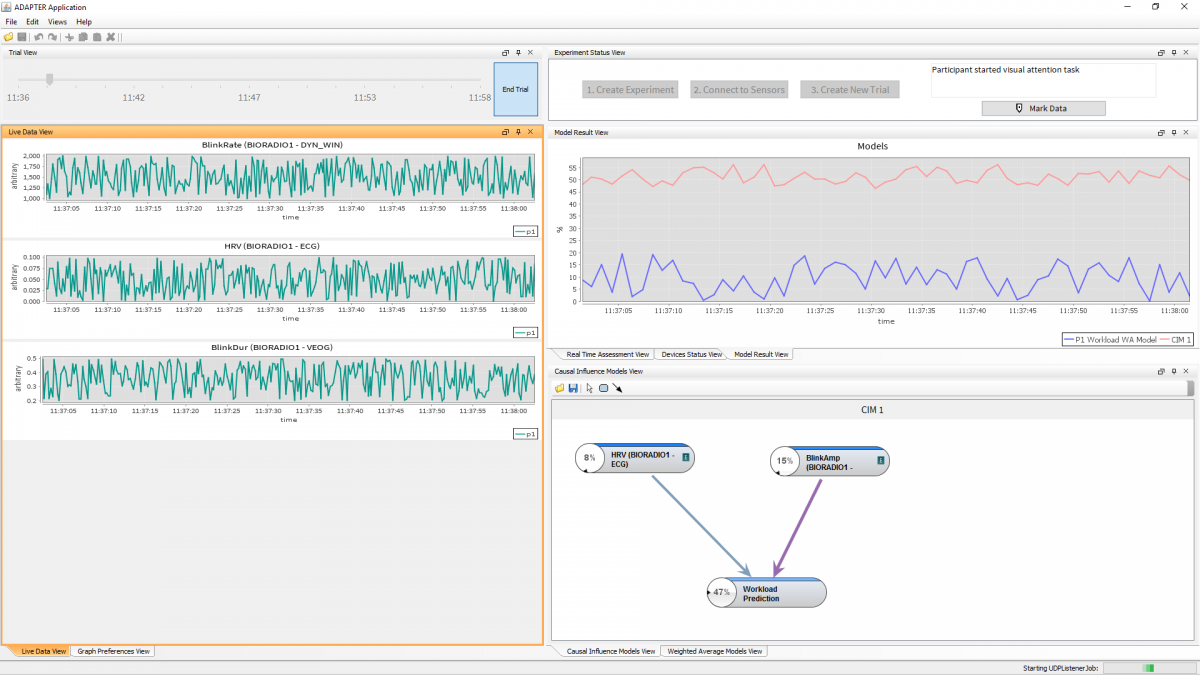ADAPTER
A toolkit that models individual and team cognitive state
An Adaptable Toolkit for the Assessment and Augmentation of Performance by Teams in Real Time
The Situation
For teams to perform effectively, individuals must focus on their tasks, while simultaneously maintaining awareness of other team members. Researchers studying and attempting to optimize performance of team members and across entire teams use assessments of behavioral, neurophysiological, and physiological signals that correlate with individual and team performance. For example, a researcher may wish to assess how much cognitive workload a new task or tool being developed adds to the individual or across the team. As another example, the researcher may wish to assess how introducing a new method of communication affects cognitive workload and performance of the team.

ADAPTER experimenter user interface
The Charles River Analytics Solution
To assist researchers studying individuals and teams, Charles River Analytics has created an Adaptable Toolkit for the Assessment and Augmentation of Performance by Teams in Real Time (ADAPTER). ADAPTER assists researchers in creating and implementing models that support research on performance and the development of augmentation strategies. It provides a framework that flexibly integrates sensors and fuses sensor data to assess human state, such as cognitive workload or stress, and performance.
ADAPTER includes:
- A Data Fusion Tool that can flexibly integrate data from current and emerging sensors
- A Model Builder Tool to create models that support research on performance
- A Model Execution Tool that implements those models on the fused data
- An Intelligent Researcher Interface to set up and monitor experiments as they unfold and see the modeled human state in real time or replay the experimental data through new models post hoc
ADAPTER offers the following functionality:
- Walk through experimental setup, including re-loading previously saved protocols
- Selection of which variables to be shown on graphs that display live data during the experiment
- Display of graphs can also be changed during the experiment
- View and creation of weighted average models of participant workload
- View and creation of causal influence models of participant workload
- Starting and ending the experiment, including a timeline showing experiment progress
- Display of connection status of all devices connected to the participants
- Live streaming of data during experiments and the ability to view or hide select variables
- Display of live output data from models during the experiment
- Saving of model output for future examination
The ADAPTER user interface is shown in the figure below.

ADAPTER experimenter user interface
The Benefit
ADAPTER enables comprehensive and holistic characterization of team member performance during real-time experimental protocols. It also assists researchers in creating and implementing models that support research on performance and the development of augmentation strategies.
ADAPTER has been deployed directly into the Air Force Research Laboratory to facilitate research on cyber operators and cyber teams. ADAPTER can also benefit researchers studying the state of any individual or any team of individuals working together toward a common goal. The individual tools within ADAPTER can be used outside of the lab to intuitively inform team commanders about how well their analysts are working together, and how to improve that performance with augmentation strategies, such as improving team dynamics or re-allocating tasks among team members. When used this way, ADAPTER can benefit US Air Force and USCYBERCOM Cyber Operations (as well as those organizations that design and develop tools for Cyber Operations) by improving their ability to assess operator and team states and dynamically apply strategies to optimize performance.
Contact us to learn more about ADAPTER and our other capabilities.
This material is based upon work supported by the United States Air Force under Contract No. FA8650-13-M-6450. Any opinions, findings and conclusions or recommendations expressed in this material are those of the author(s) and do not necessarily reflect the views of the United States Air Force.
